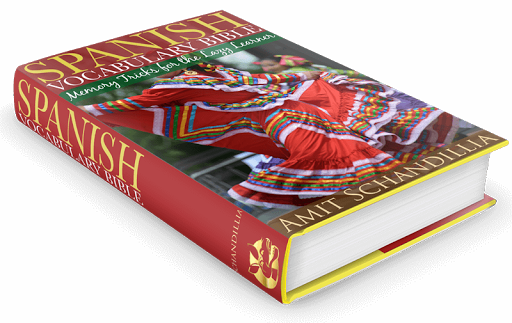Names of the fingers
First off, there’s your thumb. This one is called dedo pulgar, or simply pulgar, in Spanish. Now, since Spanish doesn’t distinguish between fingers and toes, the word, pulgar, could stand for both thumb and the big toe. In cases of ambiguity, one could use pulgar de pie for the big toe and pulgar de mano for the thumb. In Spain, it is quite usual to refer to the big toe as dedo gordo del pie.
The one next to it is the índice (index finger or forefinger). Obviously, it derives from the same Latin source (index) that gave us the English term. Some dictionaries also call it dedo índice but you should do well with just índice in the real world.
The notorious middle finger, too, has a name of its own in Spanish. They call it dedo corazón, dedo medio, mayor, or simply, medio. I have no answers if you asked why it’s called dedo corazón (heart finger); maybe because it sits in the heart of the fingers when placed in order? Other two names, dedo mayor (large finger) and dedo medio (middle finger) are pretty self-explanatory.
Regardless of whether you are a gringo or a chilango, you always wear your ring on your dedo anular or just anular (ring finger). Incidentally, the ring itself is called anillo in Spanish and both anillo and anular derive from the Latin, ānulāris, which means “ring-shaped”. Remember what they taught you in school about an annular eclipse where the Sun looks like a ring? Guess you get the connection now.
Finally, that little pinky is called dedillo, dedo pequeño, dedo meñique, or just meñique. One can also add del pie to dedo pequeño and refer to the corresponding toe as dedo pequeño del pie.
So there you are, five fingers each with a name in Spanish at your fingertips!
Doing things with your fingers in Spanish
 |
| Learning Spanish: Fingers crossed! Photo credit: John Nakamura Remy licensed CC BY-SA 2.0 |
promesa de meñique – This is “pinky swear” in Spanish. Not sure if you’re ever going to need this one but it helps to know that promesa is the Spanish for “promise” (needless to say, the two words share a common origin) and, hence, promesa de meñique stands for a “promise by the pinky” or, in other words, a “pinky swear”.
Keep in mind though that saying this to a native speaker would make them stare at you and shoot you an excessively confused look. The idea of a pinky promise is not as significant in Hispanic cultures as it is for those speaking English. So, a typically ignorant native speaker will just try to figure what your middle finger has to do with your promise and be utterly confused.
 |
| Santa flips the bird Photo credit: Dan Century licensed CC BY-SA 2.0 |
sacar el dedo – Also known as pintar el dedo, this is the most widely recognized gesture throughout the world no matter what language you speak. Regardless of what culture you come from, you are most likely to know how to “show a middle finger” and regardless of what language you speak, this gesture always means the same thing!
If you are in Colombia, hacer pistola a alguien (to give someone the finger) is what the locals use for this gesture although the other two are not always unheard of.
pulgar arriba – You use your thumb to show your appreciation for something in English and you use your pulgar to do so in Spanish. Same goes for showing dislike as well. So, pulgar arriba means “thumbs up” and the opposite, you guessed it right, pulgar abajo means “thumbs down”.
It helps to know that arriba is the Spanish for “up” and abajo, for “down”.



.png)